Forever Wild(er) Woods
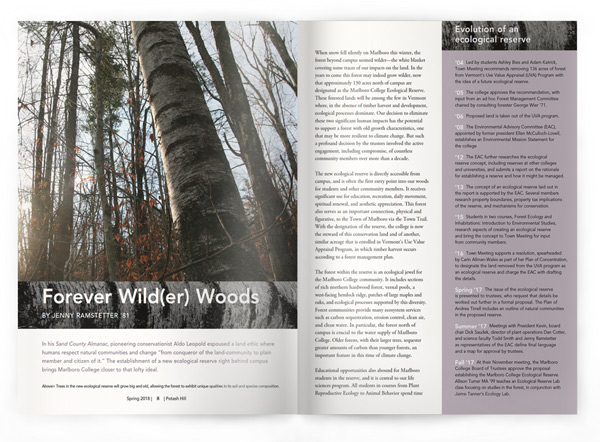
By Jenny Ramstetter ’81
In his Sand County Almanac, pioneering conservationist Aldo Leopold espoused a land ethic where humans respect natural communities and change “from conqueror of the land-community to plain member and citizen of it.” The establishment of a new ecological reserve right behind campus brings Marlboro College closer to that lofty ideal.
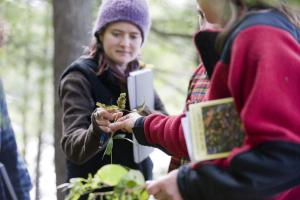
When snow fell silently on Marlboro this winter, the forest beyond campus seemed wilder—the white blanket covering some traces of our impacts on the land. In the years to come this forest may indeed grow wilder, now that approximately 130 acres north of campus are designated as the Marlboro College Ecological Reserve. These forested lands will be among the few in Vermont where, in the absence of timber harvest and development, ecological processes dominate. Our decision to eliminate these two significant human impacts has the potential to support a forest with old growth characteristics, one that may be more resilient to climate change. But such a profound decision by the trustees involved the active engagement, including compromise, of countless community members over more than a decade (see testimonials, below).
The new ecological reserve is directly accessible from campus, and is often the first entry point into our woods for students and other community members. It receives significant use for education, recreation, daily movement, spiritual renewal, and aesthetic appreciation. This forest also serves as an important connection, physical and figurative, to the Town of Marlboro via the Town Trail. With the designation of the reserve, the college is now the steward of this conservation land and of another, similar acreage that is enrolled in Vermont’s Use Value Appraisal Program, in which timber harvest occurs according to a forest management plan.
The forest within the reserve is an ecological jewel for the Marlboro College community. It includes sections of rich northern hardwood forest, vernal pools, a west-facing hemlock ridge, patches of large maples and oaks, and ecological processes supported by this diversity. Forest communities provide many ecosystem services such as carbon sequestration, erosion control, clean air, and clean water. In particular, the forest north of campus is crucial to the water supply of Marlboro College. Older forests, with their larger trees, sequester greater amounts of carbon than younger forests, an important feature in this time of climate change.
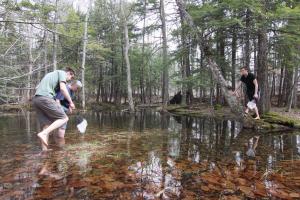
Educational opportunities also abound for Marlboro students in the reserve, and it is central to our life sciences program. All students in courses from Plant Reproductive Ecology to Animal Behavior spend time learning in these particular woods, as do students studying in other areas of the curriculum. Plan students have conducted their research in Marlboro’s forests over the years, becoming experts in animal tracking, the distribution of clubmoss species, or the ecology of pileated woodpeckers, to name a few examples. Others who have traveled to forests around the world, from Belize to Madagascar, have been inspired by their experiences here.
I’ve been fortunate to benefit from the many values of this very forest myself, through the seasons. Forty years ago this fall I first ventured into these woods and began to learn about the local flora during biology professor emeritus Bob Engel’s Plants of Vermont class. This spring I look forward to reuniting with the eager and dynamic students of last fall’s Plants of Vermont class to look for the spring ephemerals of these woods: trout lilies, spring beauties, violets, trillium. Town Trail remains one of my favorites for cross-country skiing, and I often remember my first night ski there with Norman Paradis ’79 and Tadd Lazarus ’78.
A special highlight for me was the 2016 Alumni Days walk into the autumn forest with Bob Engel and many alumni—some who know these woods better than I ever will and some who wished they had spent more time in them as students. Many were intrigued by the prospect of the ecological reserve.
While my love of this forest is rooted in its aesthetic and recreational values and educational wealth, the intrinsic value of the forest as a functioning ecosystem inspired the designation of the ecological reserve. Without the fragmentation caused by development and the impact of timber harvest practices that compact soils and remove biomass, nutrient cycling and energy flow through the forest will change as the forest ages. More decaying logs and downed branches will provide refuge for the germination and growth of new seedlings, the next generation of trees, and habitat for many species.
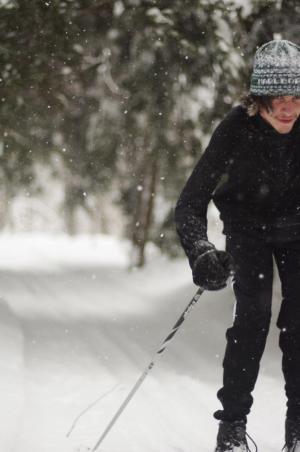
Rather than being harvested when they are 80 to 100 years old, some of our tree species—sugar maples, cherry, hemlock—may reach their full potential of 200 to 500 years old, with large diameter trunks reaching high into the lush, closed canopy. Under the soil, mycorrhizal fungi relationships will thrive as the soil leaf litter layer develops. The lack of further fragmentation will encourage movement of birds and mammals that use large, more mature tracts of forest, changing the species composition of the forest. While we cannot know the full consequences of our previous forest harvest practices, or the impacts that climate change will have on all forests, we can anticipate that the forest within the ecological reserve will develop into a more resilient system.
As is the way of Marlboro, students were at the heart of this community initiative to establish an ecological reserve (see timeline, below). When Town Meeting and the board of trustees provided their unanimous support for the establishment of the Marlboro College Ecological Reserve, I felt that Aldo Leopold would have applauded this demonstration of the college community’s land ethic. In Leopold’s words, “Examine each question in terms of what is ethically and aesthetically right, as well as what is economically expedient. A thing is right when it tends to preserve the integrity, stability, and beauty of the biotic community.”
My dream is that the designation of the ecological reserve will inspire us to think deeply about all of the college lands for which we are stewards. Perhaps in the decades and centuries to come—beyond our lifetimes—the fabric of land that is Marlboro College’s built environment, working forest, and more wild forest within the ecological reserve can become a model for Vermont and beyond. In this age of climate change and loss of biodiversity, I take solace in our action of designating the reserve. I believe that the ecological reserve exemplifies Leopold’s notion of a “right thing,” and that the values of this forest will grow as the forest grows.
Jenny Ramstetter is a biology professor at Marlboro, and has done fieldwork to conserve rare plant species in New England and reconnaissance for patches of old growth forest in Vermont.
Evolution of an ecological reserve
’04
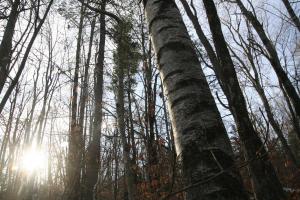
Led by students Ashley Bies and Adam Katrick, Town Meeting recommends removing 136 acres of forest from Vermont’s Use Value Appraisal (UVA) Program with the idea of a future ecological reserve.
’05 The college approves the recommendation, with input from an ad hoc Forest Management Committee chaired by consulting forester George Wier ’71.
’06 Proposed land is taken out of the UVA program.
’08 The Environmental Advisory Committee (EAC), appointed by former president Ellen McCulloch-Lovell, establishes an Environmental Mission Statement for the college
’12 The EAC further researches the ecological reserve concept, including reserves at other colleges and universities, and submits a report on the rationale for establishing a reserve and how it might be managed.
’13 The concept of an ecological reserve laid out in the report is supported by the EAC. Several members research property boundaries, property tax implications of the reserve, and mechanisms for conservation.
’15 Students in two courses, Forest Ecology and Inhabitations: Introduction to Environmental Studies, research aspects of creating an ecological reserve and bring the concept to Town Meeting for input from community members.
’16 Town Meeting supports a resolution, spearheaded by Carin Allman-Wales as part of her Plan of Concentration, to designate the land removed from the UVA program as an ecological reserve and charge the EAC with drafting the details.
Spring ’17 The issue of the ecological reserve is presented to trustees, who request that details be worked out further in a formal proposal. The Plan of Andrea Tirrell includes an outline of natural communities in the proposed reserve.
Summer ’17 Meetings with President Kevin, board chair Dick Saudek, director of plant operations Dan Cotter, and science faculty Todd Smith and Jenny Ramstetter as representatives of the EAC define final language and a map for approval by trustees.
Fall ’17 At their November meeting, the Marlboro College Board of Trustees approve the proposal establishing the Marlboro College Ecological Reserve. Allison Turner MA ’99 teaches an Ecological Reserve Lab class focusing on studies in the forest, in conjunction with Jaime Tanner’s Ecology Lab.
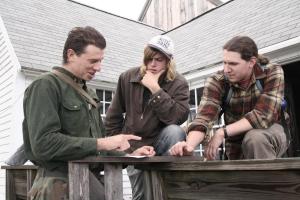
“The forest habitat of the college is what brought me to Marlboro and allowed me both to stay and to find a wondrous niche as a student and as a community member. This love and inspiration were my passionate motivations for putting lots of energy I didn’t have to spare into the forest management plan and forest protection process while I was on Plan.”
— Ashley Bies ’05, who initiated the move to take college land out of timber management, and has served as a conservation biologist on projects across North and Central America.
“Having forests that are unmanaged is vital to our understanding of forest ecosystems generally, but it is especially important in the face of climate breakdown. To have this forest right here in our midst is invaluable. We know that diverse forest communities are more resilient, and that they may well have greater propensity to withstand climate change. Knowing that this piece of land is an ecological reserve is inspiring and encouraging, and it is forward-thinking on the part of Marlboro College to set aside this land.”
— Lisa Merton, Marlboro neighbor, who audited Jenny’s course on Forest Ecology and co-created the new documentary Burned: Are Trees the New Coal?
“To be in the woods is one of the reasons I chose to come here. I have spent a lot of time walking and skiing on the trails, and I’m glad that future community members will have the same opportunities that I’ve had to connect with this place. For me, it means that Marlboro is living up to its values and working hard to maintain the unique qualities that make it such a special place.”
— Chris Lamb ’18, who was part of the Forest Ecology class that collaborated on the proposal for the ecological reserve.
“I find it very encouraging that the community cares deeply enough about ecological processes in the world around us to designate an area where those processes are given primary consideration and protection. This shows that people at Marlboro recognize the fundamental importance and uniqueness of ecological processes.”
— Willson Gaul ’10, who did research on forest reserves as part of his role on the EAC, and is now pursuing a PhD in ecological modeling at University College Dublin.
“Now that it is in place, the reserve provides an opportunity for a rich conversation around the values and opportunity costs associated with activities pursued and forgone in the reserve. I hope it will result in a wide-ranging look at the entire property and how it can be utilized to expand educational opportunities and explore Marlboro’s place in various communities: local, regional, global, anthropological, and wild.”
— Pieter Van Loon ’88, who wrote his Plan of Concentration on forest management of college lands, and is now a forester with Vermont Land Trust.
“The forests around the college were what first inspired me to study ecology. I grew to know these trails well, and I’m excited about the opportunity to visit this forest in years to come and see how much it grows and changes without the threat of timber harvest. Leaving this land to continue with its natural processes will maintain the biodiversity in this area and also create opportunities for the students to study natural processes.”
— Andrea Tirrell ’17, who was part of the Forest Ecology class that developed the reserve proposal, and who included an assessment of community types in the proposed forest as part of her Plan.
“We now have the opportunity to observe wildlife populations right in our backyard without future threat of massive, local anthropogenic disturbances. The formation of the ecological reserve is a reminder that we have a responsibility to balance exploration and recreation with ecological protection—and that’s a conversation that could have impact far beyond Marlboro College.”
— Adam Katrick ’06, who helped spur the original recommendation to set land aside from timber management, and is founder and president of Wolfgard Northeast.
“My courses all utilize the outdoors as our classroom, so this commitment to the reserve is invaluable. We practice tools used by ecologists to collect data and answer questions, we explore different habitats and identify the species within them, we learn to track and make observations of the subtle and not so subtle changes throughout the seasons.”
— Jaime Tanner, biology professor, whose Ecology Lab course began collecting data this year for ecological monitoring in the reserve.
“If I had been able to help protect even an acre of forested land, I would have been happy. Marlboro had this incredible chance to be a part of a movement to safeguard land by recognizing its value untouched or undeveloped. That we chose to seize that opportunity and protect 130 acres makes me incredibly proud of this community.”
— Carin Allman-Wales ’17, who, as part of her Plan of Concentration, spearheaded the effort to present and pass the Town Meeting resolution to set aside the ecological reserve.
Forest Love
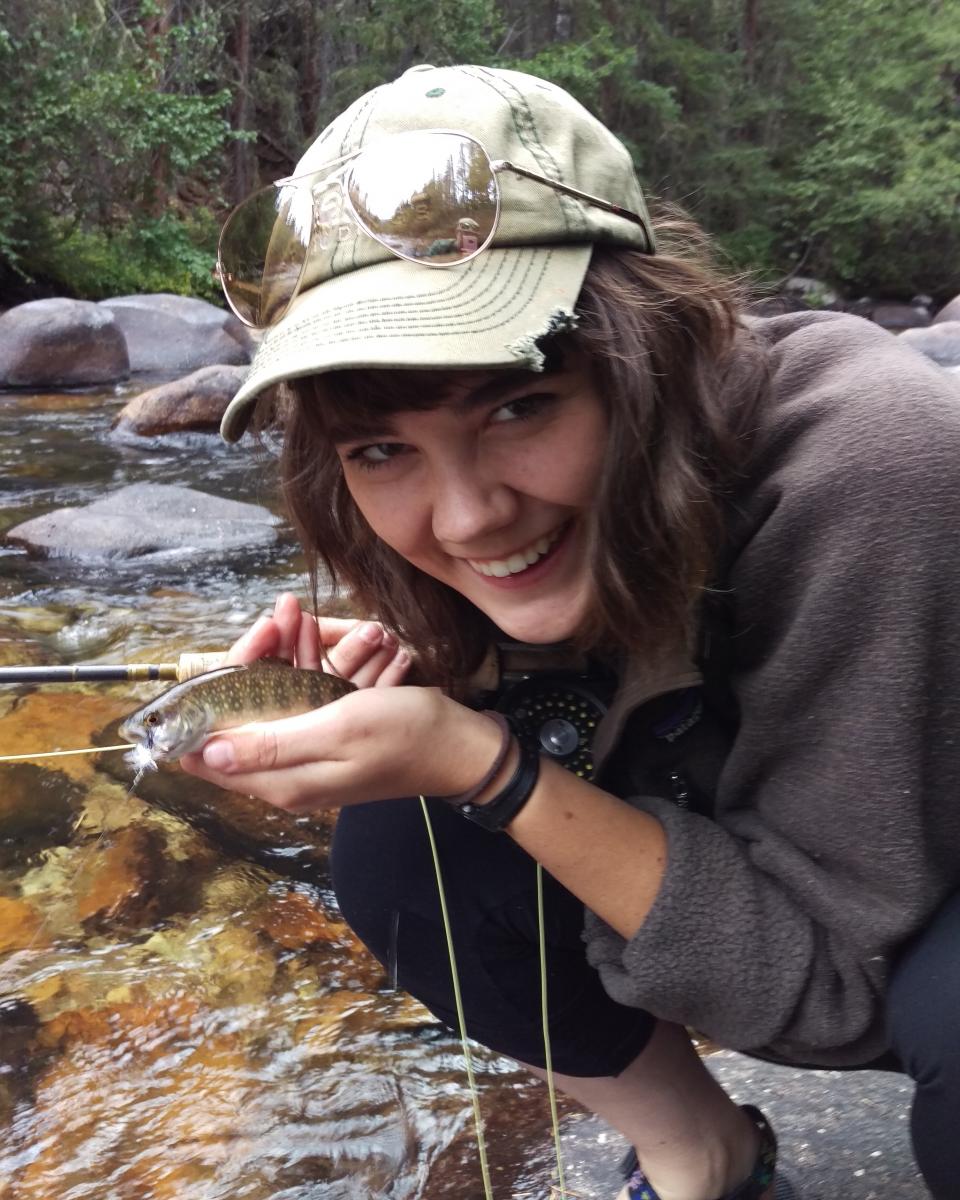 “I seek to understand the multifaceted and contentious issues of land rights, especially from local perspectives,” says Sophie Ackerman, who is doing her Plan in forest ecology and has been involved in the ecological reserve proposal since she transferred to Marlboro. “The opportunity to speak with local people and understand the land issues that they are most concerned about has been extremely influential in my Plan work.” Sophie spent last summer as a volunteer coordinator in Wyoming’s Medicine Bow National Forest, gaining firsthand experience with key environmental issues such as wildfire and invasive species. “In spite of a presidential administration dedicated to rolling back land protections, many of the people who live closest to these places are not in favor of corporate extractive industries that harm those who have relied on public lands for generations.”
“I seek to understand the multifaceted and contentious issues of land rights, especially from local perspectives,” says Sophie Ackerman, who is doing her Plan in forest ecology and has been involved in the ecological reserve proposal since she transferred to Marlboro. “The opportunity to speak with local people and understand the land issues that they are most concerned about has been extremely influential in my Plan work.” Sophie spent last summer as a volunteer coordinator in Wyoming’s Medicine Bow National Forest, gaining firsthand experience with key environmental issues such as wildfire and invasive species. “In spite of a presidential administration dedicated to rolling back land protections, many of the people who live closest to these places are not in favor of corporate extractive industries that harm those who have relied on public lands for generations.”
